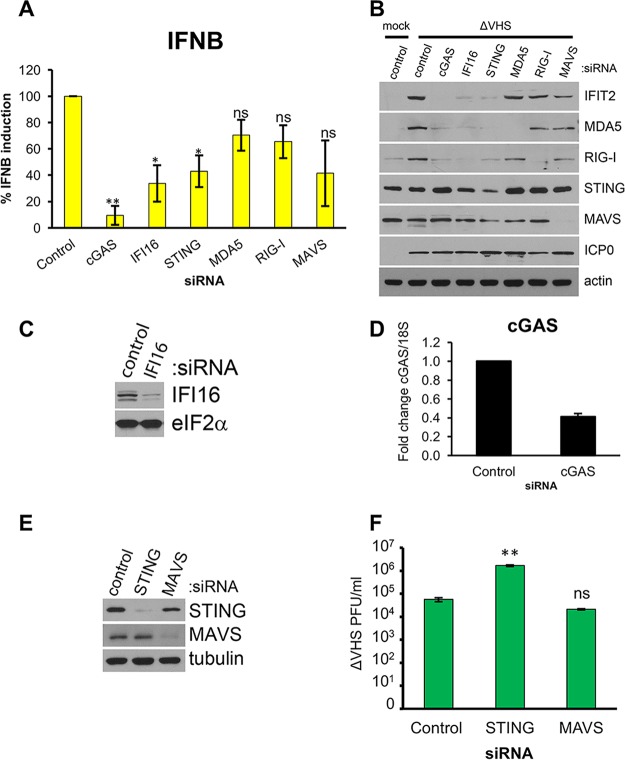FIG 4.
IFN-β and ISG induction is dependent on DNA sensing. NHDFs were transfected with siRNAs targeting dsRNA- and DNA-sensing pathway components or a nonsilencing control siRNA. At 3 days posttransfection, the cells were infected with ΔVHS at an MOI of 5. (A) Total RNA was isolated at 6 hpi and subject to qRT-PCR for IFN-β and normalized to 18S. The means ± the SEM of three independent experiments is shown. *, P < 0.05; **, P < 0.01 (Student t test compared to control). ns, nonsignificance. (B) ISG protein accumulation (IFIT2, MDA5, and RIG-I) and siRNA-mediated knockdown efficiency were analyzed by immunoblotting whole-cell lysates collected at 12 hpi. (C) Knockdown of IFI16 was verified by immunoblotting of uninfected cells 3 days after siRNA transfection. (D) Knockdown of cGAS was verified by qRT-PCR in uninfected cells 3 days after siRNA transfection. Means ± the SEM of three independent experiments are plotted. (E and F) NHDFs were transfected with siRNAs targeting STING, MAVS, or a nonsilencing control siRNA. At 3 days posttransfection, the cells were harvested and the siRNA-mediated knockdown efficiency was analyzed by immunoblotting whole-cell lysates (E) or cells infected with ΔVHS at an MOI of 0.001 (F). At 48 hpi, cultures were collected, and infectious virus was quantified by titering on Vero cells. Means ± the SEM of three independent experiments are plotted. **, P < 0.01 (Student t test compared to control).

